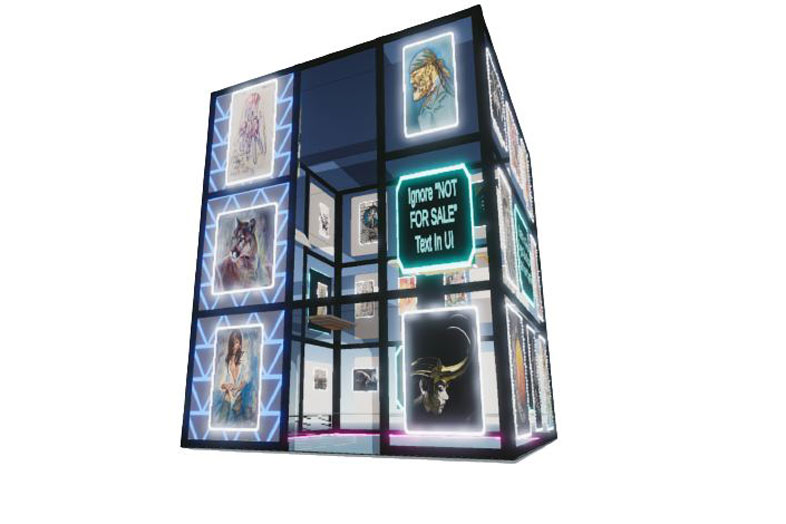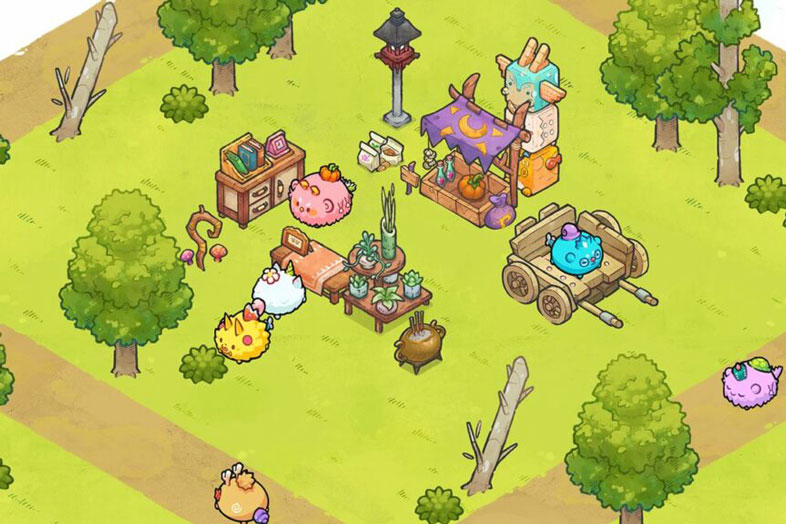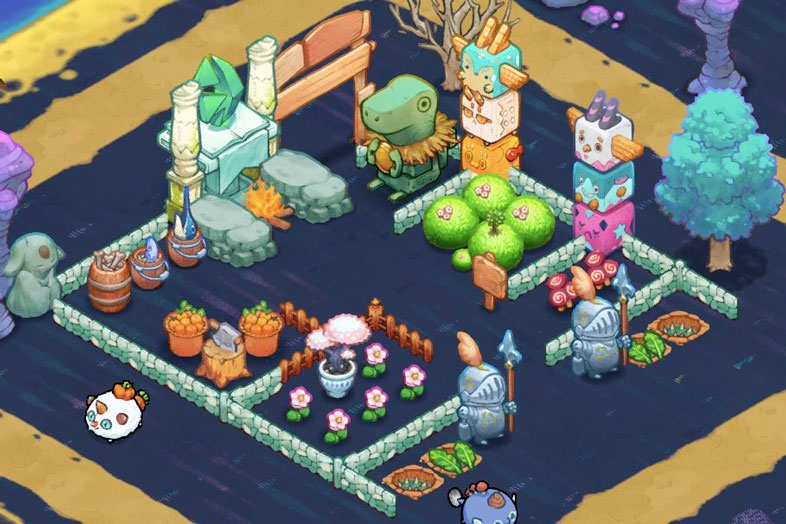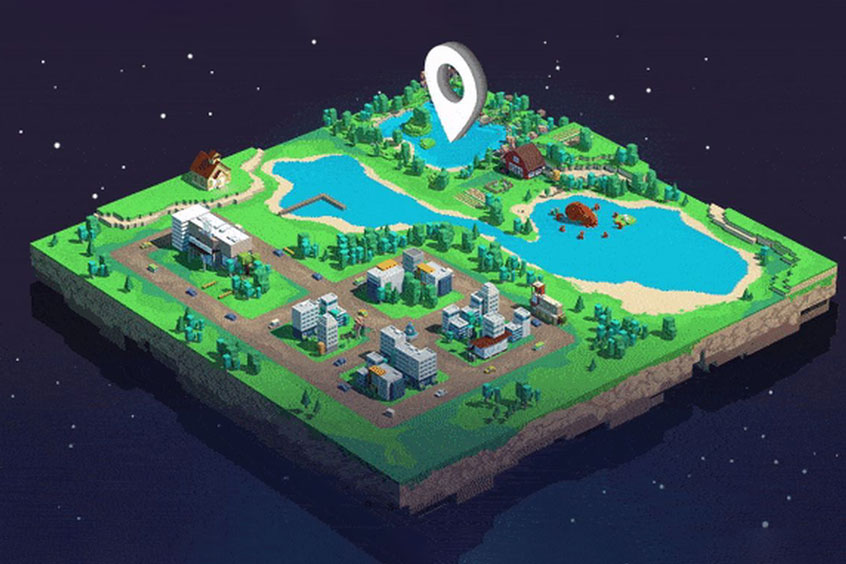Table of Contents
I. The high-yielding land sale
To dissect the reality of digital real estate in the metaverse and get to know the big picture, let’s first have a look back at the land sale history of typical metaverse land-based projects such as Decentraland, The Sandbox, and Illuvium.

Art gallery comedy club Decentraland Scenes buildingsAccording to data from NFT stats, in the last 7 days, Decentraland sold Decentraland Scenes & Buildings – DCL – NFT Gallery – by DCL Real Estate NFTs for a total sales volume of $87.98. The average price of one Decentraland Scenes & Buildings – DCL – NFT Gallery – by DCL Real Estate NFT was $88.
Another source of data also shows a broader Decentraland land sale volume and history. Decentraland has 90,601 plots of land in total, including 43689 private land parcels, 33886 district land, 9438 streets, and 3588 plazas. Each land covers 16m x 16m square spaces; previously it was 10m x 10m. The highest ever sale of land is 2,000,000 MANA (~1800k USD). The average land price has risen from less than $500 to more than $3000 USD.
Last year, in 2021, The Sandbox launched a land sale event on November 4th. Regular land had been sold for 1011 SAND, while premium land had a price tag of 4683 SAND. With SAND at that time trading for $3.17, that would mean that the cheapest land cost $3204. The Sandbox has seen a surge in demand for land. Land for The Sandbox has been in high demand since Facebook first entered the metaverse. Land sells easily on the secondary market for 0.9ETH, or $4000.
To be easily related to, we could also take the case of the World Of Defish land sale event. World Of Defish is the Poolz-fully-incubated NFT game that launched a land sale on DarePlay in September last year. The land sale was a great success. World Of Defish raised $200K in total after closing sale. For more details, please pay a quick visit to https://dareplay.io/genesis-sale/world-of-defish-ino
II. Why are land sales popular among the metaverse projects?
Land sale events are common and popular among leading metaverse games such as Decentraland, The Sandbox, Illuvium, Other Side, or Axie Infinity. Why is this model so popular?
First off, metaverse game developers tend to sell land, probably due to the fact that this is the quickest way to get money and invest back into their game development. Additionally, land sales have proven to be a great success at the moment thanks to the incredible demand. Buyers can sell their purchased land for an upfront profit. It can raise lots of money for buyers in both short-term and long-term periods of time.
III. Is selling land a sustainable model?

By selling land, specifically, game developers are selling the metaphor of land and setting up an expectation that lands are going to be “land-like-assets”—lands are like assets which increase their value with time.
However, by doing so, land-based game developers are also creating a chicken and egg problem. The reason is that they have to prove their project is lucrative with traction, real users, and has the potential to go for a long run. Things are ambiguous since most land-based games are in the forming phase and have very little to deliver and fulfill their promise. Or else, what they have delivered doesn’t satisfy what they promised at first.
At some point, things could somehow all fall apart. That’s the tricky situation. People may still be attracted to land-based projects since they can, in fact, bring in profit upfront. But for the long-term period of time, this may also change. It turns out land sales are not a great strategy since it’s mostly based on expectations.
In terms of business model, the current land-base game mechanism is optimized to benefit the landowners who were available and could afford to buy land during the sale event rather than the creators who arrived later, renting out the land from the landowners and actively contributing to the game’s development.
Creators are often required to pay the landlord to use the space. Landowners, on the other hand, are the middlemen who simply own the asset and profit passively from it. The existence of the middle man goes completely against the Web3 ethos since Web3 deliberately intends to eliminate the middle party.
Additionally, most land-based games or metaverse games are aspiring to become user-generated-content games in which users or players are the ones who continuously create and make the game come alive. In order to do so, each and every game participant has the responsibility to actively participate in the game ecosystem and its economy. With the current model, landowners in land-based games are not fulfilling the ideal system of a user-generated-content game.
IV. Solutions: the way out for land-based games.

Recently, Axie Infinity has announced its origin version, giving out free land and free Axies for players to experience in Free-to-Play mode, encouraging players to be creative and contributive in the Infinity universe of Axie Infinity.
We believe that welcoming players at the entrance with no cost is an effective way out for land-based games. A land-based game where lands do not play as lands but rather are given out to players as materials to co-create and build up the shared metaverse. This is to make composability possible, making land-based games aligned with the Web3 ethos.
Another solution could be to keep the current business model but put taxes on landowners. How could it be better for land-based games? Putting taxes on landowners forces them to constantly interact with the in-game ecosystem, turning them from passive to active participants. Taxes will go back into the hands of game developers and also to reward creators who mostly contribute to the development of the game in general.
In the end, metaverse games are still in their infancy. To achieve ultimate success and sustain their model, they would need more improvements, requiring more flexibility to better adapt to what the market needs. Land sales turn out not to be a wise strategy to follow in the long run. Let’s pay close attention to what Axie Infinity is adjusting and see what could come out of it. The future metaverse is lurking around the corner. Keep a close watch!


 Tiếng Việt
Tiếng Việt

Related Posts
Top 5 Biggest Metaverse Venture Capital Firms you may know
The metaverse definition – All you need to know about the metaverse
A Grand View On The Mainstream Metaverse Game Industry
A Broad View Of The GameFi Industry And New NFT Games
Top 5 Best Metaverse Games In The Market You Should Not Miss Out On
Top 7 amazing Free-to play NFT games you shouldn’t miss in 2022